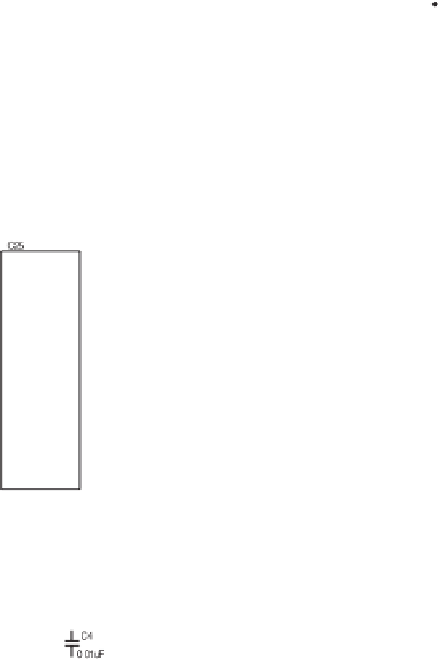Biomedical Engineering Reference
In-Depth Information
IC3
0
OPA603
Figure 6.14
Two different DACs can be used with the arb: A high-speed ECL DAC capable of updating its output at up to 100 mega-
samples/s can restore high-frequency signals with high resolution. Alternatively, a lower-cost DAC provides more limited performance for
applications that require writing speeds of up to 300 kilosamples/s. The DAC analog outputs are then offset and scaled as needed. In addi-
tion, a summing channel is provided to expand the arb's versatility.
sampling clock can be supplied by an external TTL-level clock through connector J3 and
switch SW2.
The arb's circuitry requires a supply of
5 V for the logic circuitry,
5 V for the ECL
logic of the high-speed DACs, and
12 V for the analog circuitry. The power supply of
Figure 6.16 generates these voltages from a 12-V ac input. As shown in these
gures, the
arb, will lose the waveform data as soon as power is removed. For nonvolatile operation,
however, the RAMs may be mounted on Dallas Semiconductor's SmartSocket DS1213D
intelligent sockets. Remember that these sockets are designed to be compatible with
RAMs of up to 128k
fi
8. For this reason, four more PCB pads than those required for each
RAM IC are required when using the DS1213Ds. The
PD43256B RAMs are then
mounted on pins 3-30 of the SmartSockets. Another option is to use Dallas Semiconductor
DS1210 ICs to handle RAM power backup from a small battery [Bachiochi, 1990].
µ



























































































































































































































































































































































Search WWH ::

Custom Search